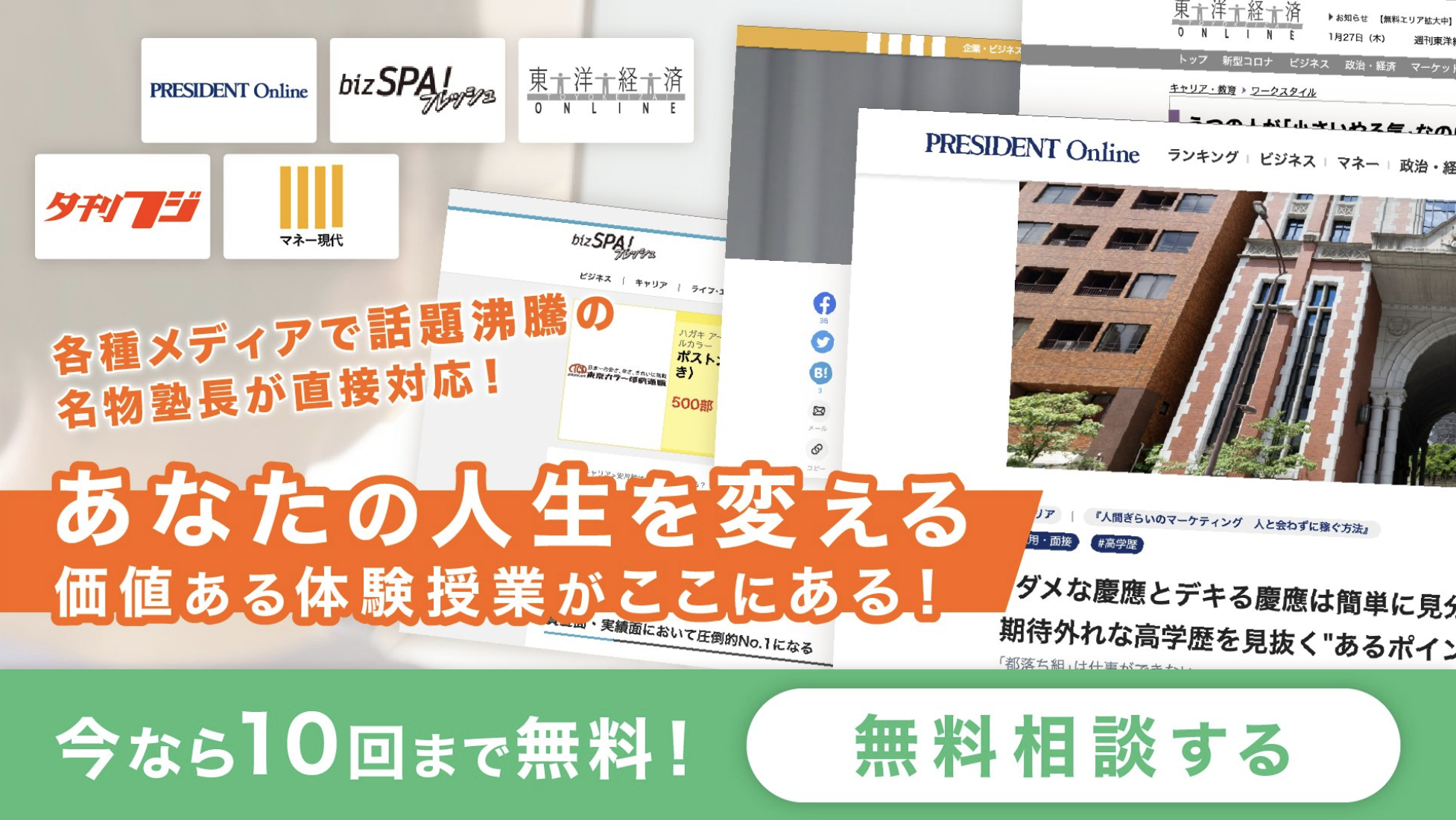早稲田大学 国際教養学部 AO入試 志望理由書 提出例(シヴィルカ ジュリアン 教授参考)
Dear Representative at Admission Office,
First and foremost, I would like to thank for the opportunity given, and in this letter I will do my best to explain my motivation in applying for School of International Liberal Studies at Waseda University, hoping to pursue a major in Media History and International Business Studies later in my academic years. I would be more than grateful if you could kindly give it a read and grant me an admission. During the in-person interview, I would also be delighted to expand more on my area of studies, previously participated activities and what I wish to achieve with liberal studies curriculum including study abroad program.
Advertising has experienced some major milestones – from the emergence of the printing press in the 1440s or the huge impact of television to today’s digital advertising. Since its very first beginnings, which are thought to date back to steel carvings made by the ancient Egyptians, advertising has constantly had to adapt and change to suit new mediums and an increasingly savvy audience. Over the last hundred years, America has been the advertising central of the world and birthplace of pop culture, thus studying how advertising grew in America, how different formats were born, how products and brands were produced and promoted, and how advertisements and agencies reflect and introduce cultural trends and issues could provide us with much useful insights.
In the eighteenth century, many American colonists enjoyed imported British consumer products such as porcelain, furniture, and musical instruments. 18th and 19th century advertisements were not only for consumer goods, it ranged from imported luxury items to notices of slave sales or appeals for the capture of escaped slaves, mostly utilizing space next to editorial content. In the 1880s, industries ranging from soap to canned food to cigarettes introduced new production techniques to produce in large quantities, and sought to find and persuade buyers. It is said advertising volume in the United States grew from about $200 million in 1880 to nearly $3 billion in 1920. While advertising generated modern anxieties about its social and ethical implications which can be controversial such as nude, racism or objectification of women, it nevertheless acquired a new centrality in the 1920s. Consumer spending–fueled in part by the increased availability of consumer credit–on automobiles, radios, household appliances, and leisure time activities like spectator sports and movie. From there, advertising formats developed drastically, from little spaces next to editorial content, billboard spaces, tv commercials to digital spaces providing more personalized experience.
America has been the advertising central and it keeps giving birth to innovative technologies til today. Understanding the development of advertising is one thing, but also comparing how it reflected the social trends in different countries can shed light on our consumption journey. I aim to continue my research on this topic and further gain my own perspectives in international culture, media history and social science studies to unlock different pockets of education that would help me work in today’s competitive global workplace. And in order for me to attain high-level education and equip myself with what is needed to survive the next decades of globalization and competition, and locate professional opportunity, it is extremely important for me to study various international studies among like-minded students at Waseda where liberal studies is offered. Studying abroad in relevant school that excel in the field of studies would be an enriching experience. Thank you very much for reading and I am very much looking forward to hearing good news.
Sincerely Yours,






コメントを残す